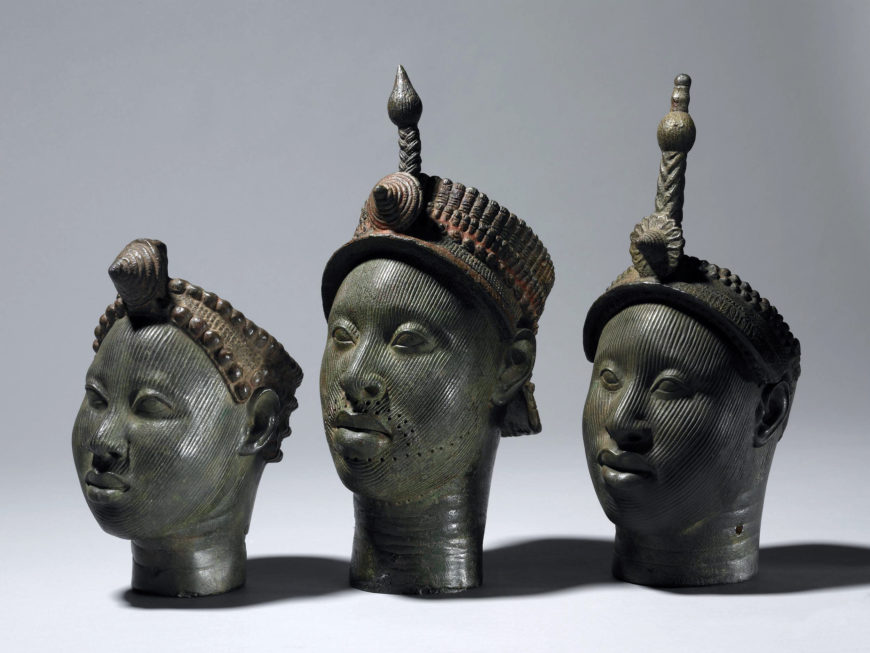In January 1938 workmen were clearing away topsoil for house foundations they struck metal and found a group of sculptures in the form of human heads cast in metal. The location was in Wunmonije Compound in the city of Ife, in what is now south-western Nigeria. This accidental find led to the eventual discovery of seventeen heads in brass and copper and the broken top half of a king figure.
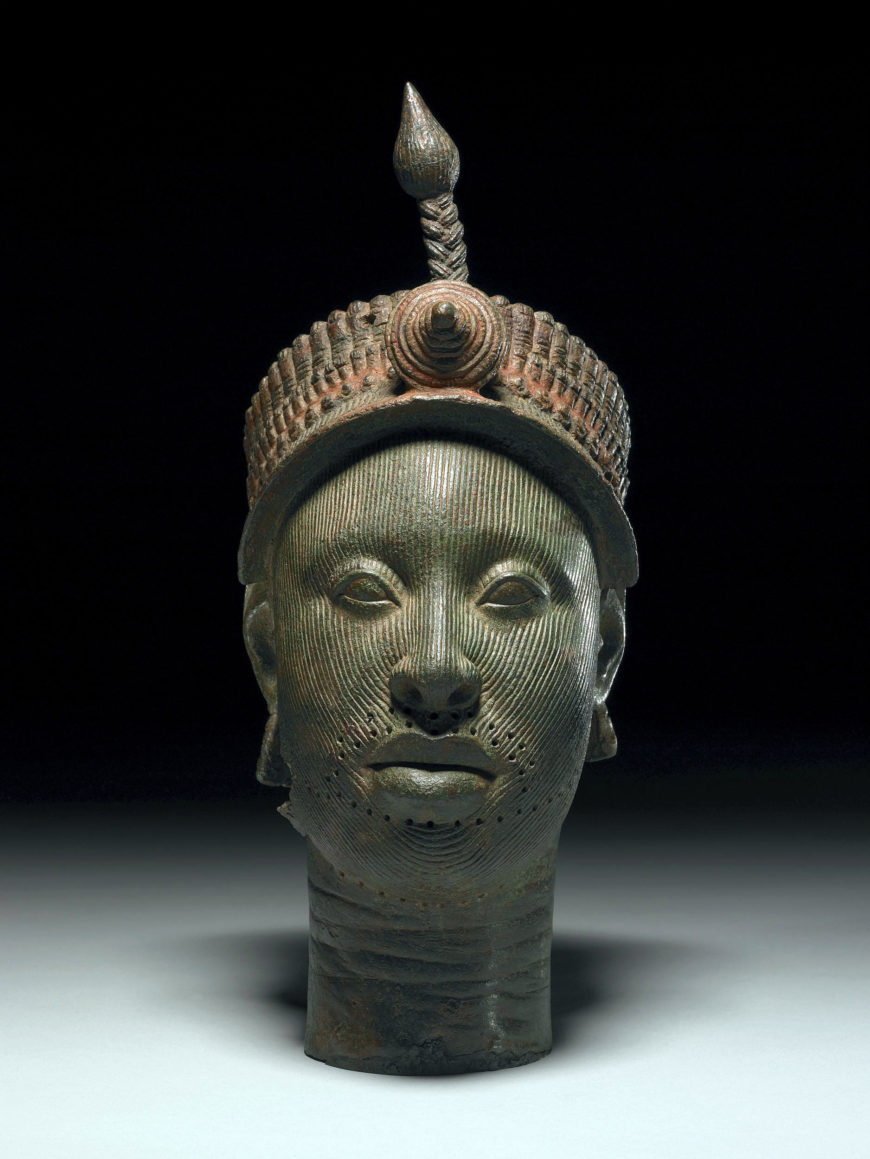
Ife head: Brass head of a ruler, 1300–1450, brass, made in Ife, 35 cm high (© Trustees of the British Museum)
This magnificent brass head was one of those discovered in Wunmonije Compound. The identification and function of the head, and the others discovered at this site, remain uncertain. It clearly portrays a person of status and authority, possibly a king (ooni) of Ife.
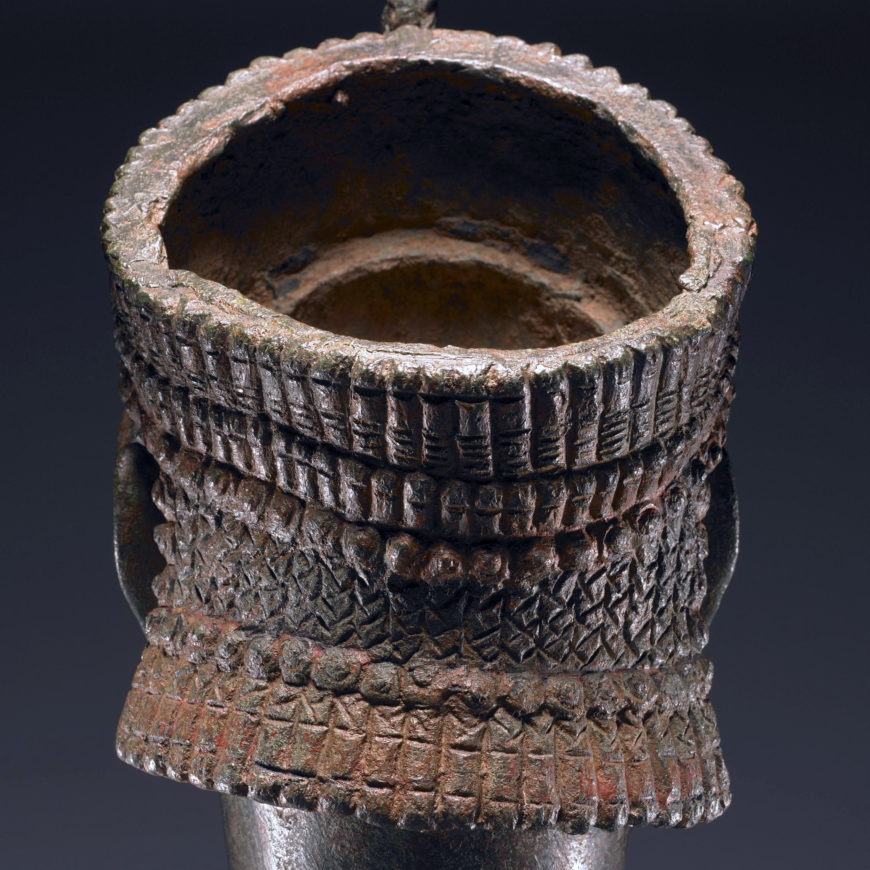
Ife head: Brass head of a ruler, 1300–1450, brass, made in Ife, 35 cm high (© Trustees of the British Museum)
The elaborate beaded headdress with feathered fringe was originally painted in red and black. Traces of the pigment remain today.
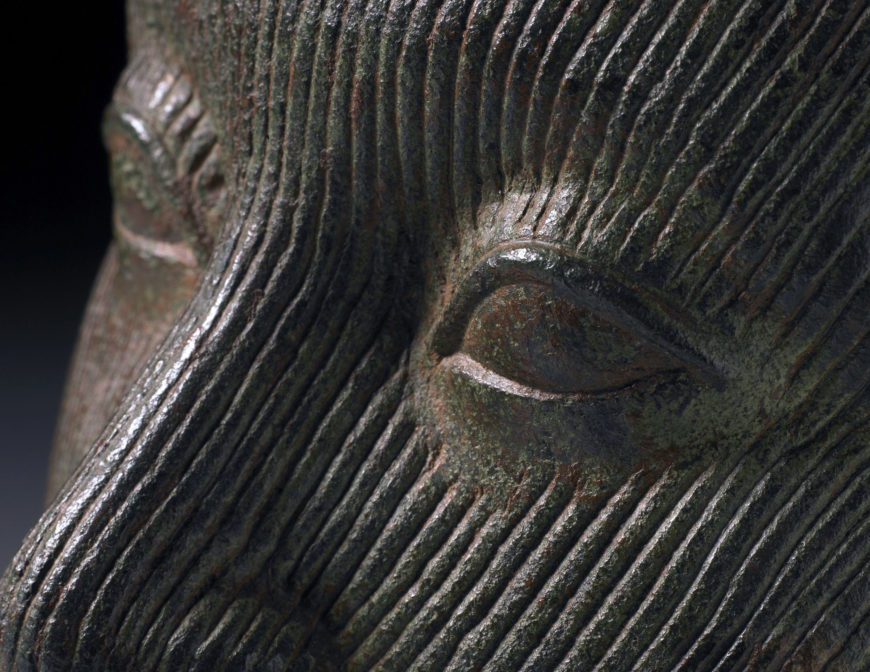
Ife head: Brass head of a ruler, 1300–1450, brass, made in Ife, 35 cm high (© Trustees of the British Museum)
The finds from Wunmonije Compound were published in 1938–9 and created a sensation in the western world. It was initially assumed that these beautiful sculptures could not have been made in Africa by African artists. The life-like modeling was compared with the classical traditions of Ancient Greece and Rome. It was even suggested that these heads were evidence that Ife was the site of the legendary lost civilization of Atlantis as described by the Greek philosopher, Plato. The sculptures from Ife are now rightly seen as one of the highest achievements of African art and culture.
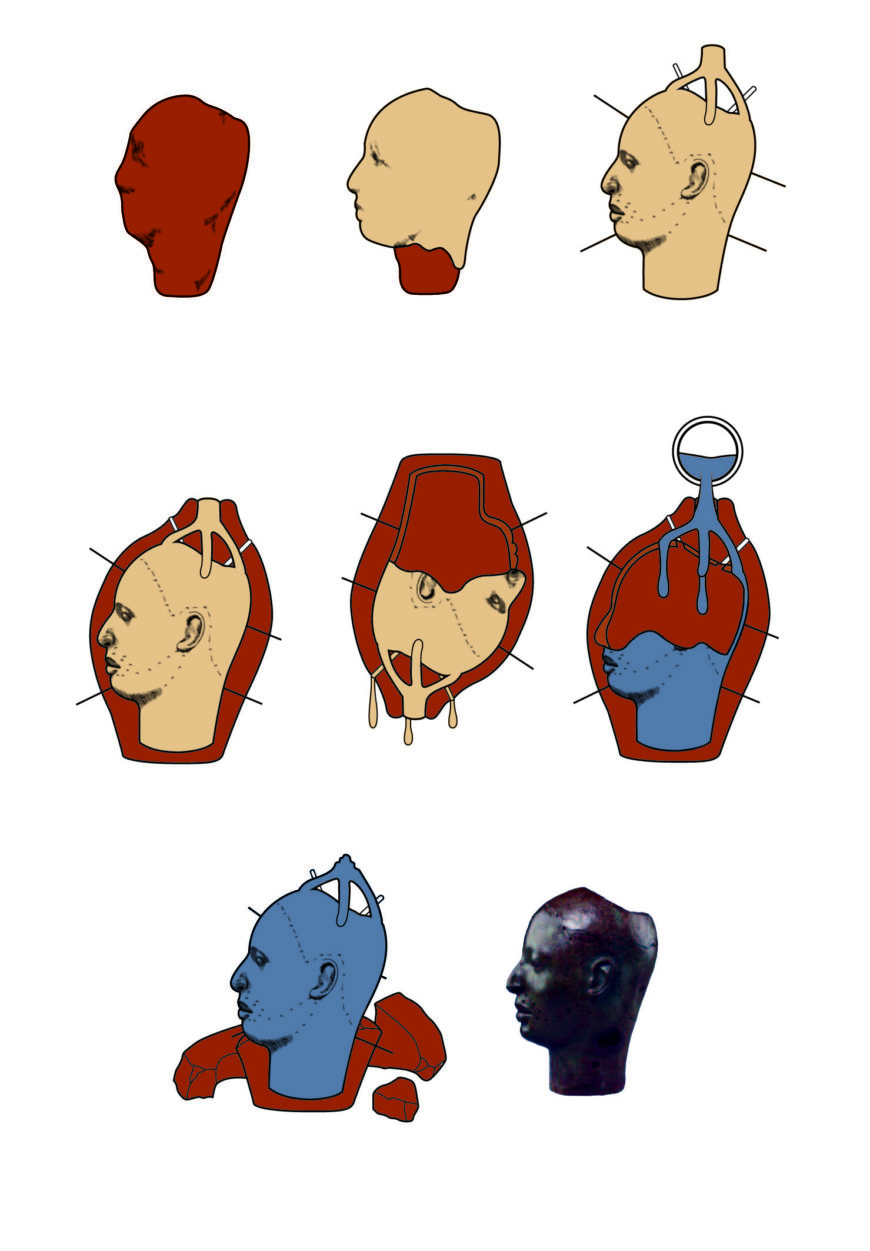
Lost-wax casting, for Ife head: Brass head of a ruler, 1300–1450, brass, made in Ife, 35 cm high (© Trustees of the British Museum)
Ife began to develop as a city-state in the late first millennium (around C.E. 800). It became a leading political, economic and spiritual center in the lower Niger region. Between 1100 C.E. and 1400 C.E. it flourished as a commercial centre with access to the lucrative trade networks along the Niger River. Today, Ife is regarded as the legendary homeland of the Yoruba-speaking peoples. Even today, its ruler is thought of as the descendant of the original creator gods.
© Trustees of the British Museum

